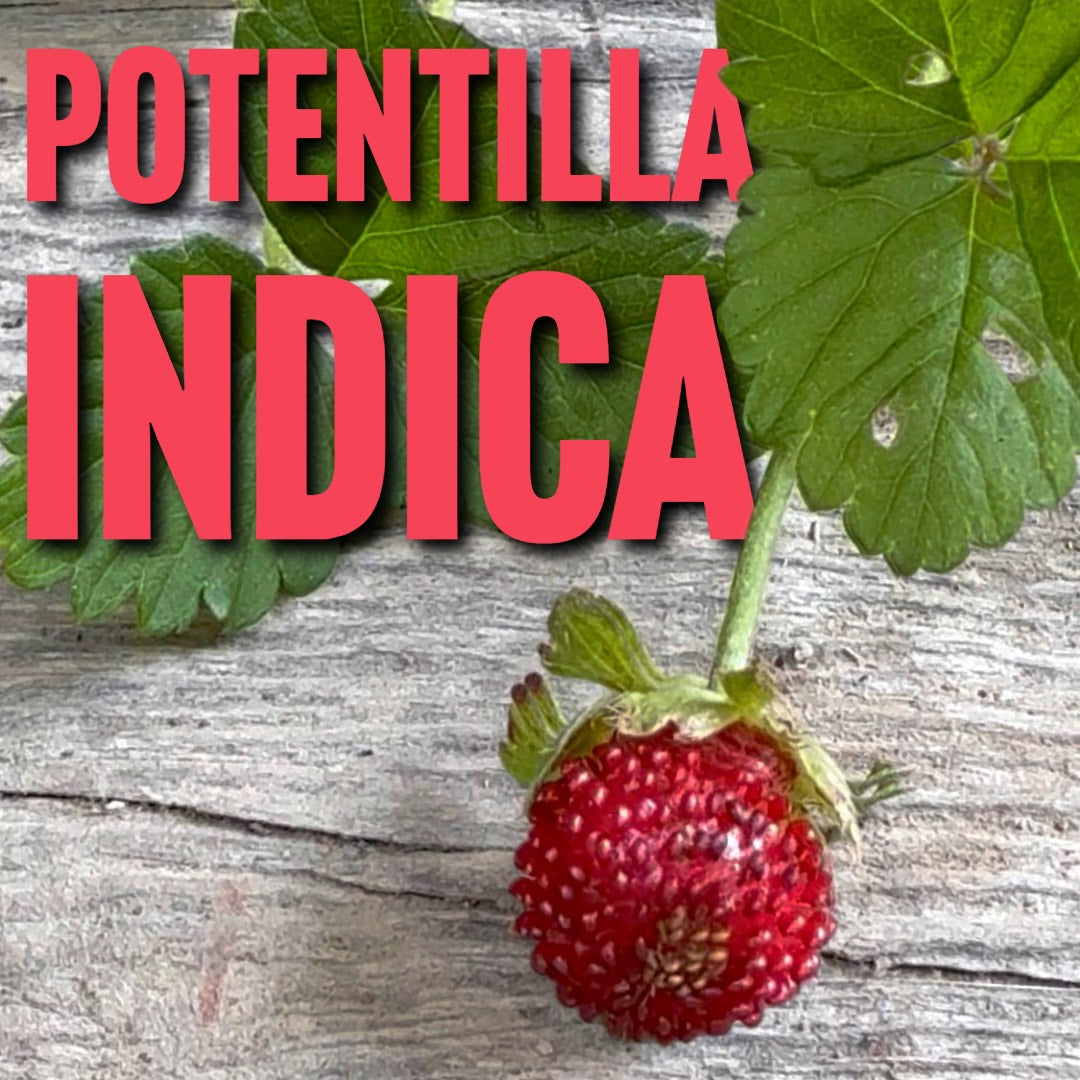
Indian Strawberry: Misunderstood but Edible
Common Name: Indian Strawberry
Scientific Name: Potentilla indica (formerly Duchesnea indica)
Also Known As: Mock Strawberry, False Strawberry, Snake Strawberry
Walk through a patch of shaded woods, an old homestead, or even a suburban lawn in the South, and chances are you’ll spot a low-growing plant with bright yellow flowers and tiny red fruits that look an awful lot like wild strawberries. Most folks take one look and mutter, “Don’t eat those—they’re poisonous.” But here’s the truth: they’re not.
What Is Indian Strawberry?
Potentilla indica, commonly called Indian strawberry, is a ground-hugging plant native to Asia that’s become widespread across much of the United States. It’s often dismissed as a weed, and because it resembles true wild strawberry (Fragaria virginiana), it gets a bad rap. But this plant has its own story—and its own uses.
Indian strawberry is not toxic. It’s edible. And while it’s not going to win any flavor contests, it still holds value, especially for those of us who like to know the land we walk.
Physical Characteristics
If you want to confidently identify Potentilla indica in the field, look for these distinguishing features:
Flower
-
Color: Bright yellow
-
Petals: Five rounded petals per flower
-
Growth: Flowers rise above the leaves on individual stalks
-
Blooming Period: Spring through early summer
This is the most obvious difference between Indian strawberry and true wild strawberry, which has white flowers.
Fruit
-
Color: Bright red
-
Texture: Bumpy or knobby—almost like a strawberry covered in small beads
-
Size: Roughly pea-sized
-
Taste: Mild to flavorless, often described as “bland” or “watery”
-
Growth: Fruit sits on top of the leaves rather than hiding beneath them
Leaves
-
Structure: Trifoliate—three leaflets per stem
-
Edges: Coarsely toothed
-
Surface: Lightly hairy, medium green
-
Arrangement: Forms dense ground cover via creeping runners
Habitat
Indian strawberry thrives in moist, shaded areas but adapts well to sunny lawns, roadsides, and open woodlands. It’s common throughout the Southeast but has spread across the U.S.
Nutritional Information
Now let’s talk nutrition. While Indian strawberry isn’t packed with flavor, it still has a few benefits for the backcountry forager or curious hiker.
Water Content
The fruit is about 91% water, making it a minor source of hydration—especially handy if you’re without a canteen and need to supplement in the field.
Antioxidants
It contains antioxidants, particularly phenolic compounds, which may have mild anti-inflammatory or immune-boosting properties, although far less concentrated than in its sweeter cousin, the wild strawberry.
Vitamin C
Like many fruits in the Rosaceae family, Indian strawberry has small amounts of Vitamin C, useful for maintaining immune function and staving off scurvy during long stints without fresh food. Don’t rely on it as your sole source, but every little bit counts in a survival situation.
Fiber
The seeds and skin provide a bit of insoluble fiber, helping digestion—though again, the quantity is low unless you’re consuming them by the handful.
Final Thoughts
No, Potentilla indica isn’t poisonous. And no, it doesn’t taste like the strawberries you’re used to. But it’s not useless, either. It’s another plant in the woods that adds to your working knowledge of the natural world. It reminds us that what’s often labeled as a weed can still be edible—and educational.
If you’re teaching kids about edible plants, Indian strawberry is a safe one to start with. If you’re spending time in the field and want to reinforce your plant ID skills, use it to test yourself: Can you tell it apart from Fragaria virginiana at a glance?
Nature doesn’t waste space—and neither should we. Even the humble Indian strawberry deserves a place in your knowledge base. And next time someone says it’s poisonous, you’ll know better.


Leave a comment